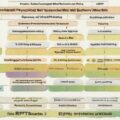What is Self-Determination Theory?
Self-Determination Theory (SDT) is a theory of motivation that emphasizes the importance of humans’ innate psychological needs in motivating behavior. According to SDT, people have three key needs that energize their behavior and influence their motivation:
- The need for autonomy – the desire to feel in control of one’s own behaviors and goals
- The need for competence – the desire to gain mastery of tasks and learn different skills
- The need for relatedness – the desire to feel connected to and valued by others
When these three needs are supported, people tend to experience greater motivation, engagement, and well-being. Conversely, when these needs are thwarted, people often feel less motivated and more apathetic or distressed.
Key Principles of Self-Determination Theory
SDT is based on five key principles:
- Humans have an innate, psychological drive to develop interests and skills. We are naturally oriented toward growth and engagement.
- Optimal development and behaviors require satisfying basic psychological needs for autonomy, competence, and relatedness.
- The degree to which any behavior is self-determined depends on the degree to which it is autonomous versus controlled.
- The social environment influences motivation and behaviors through either supporting or thwarting psychological needs.
- The type and strength of motivation regulates behaviors, influencing outcomes like performance, relational functioning, and wellness.
Self-Determination Theory’s View of Motivation
A key aspect of SDT is differentiating between autonomous motivation and controlled motivation:
- Autonomous motivation is characterized by engaging in behaviors out of interest, enjoyment, or personal values. Autonomously motivated behaviors align with one’s sense of self.
- Controlled motivation involves behaving to gain a reward, avoid punishment, or satisfy external pressures. Controlled behaviors induce feelings of pressure and coercion.
Research shows autonomous motivation promotes greater psychological health, effective performance, and well-being. In contrast, controlled motivation is linked to poorer outcomes.
Applications of Self-Determination Theory
SDT has been applied to many life domains including:
- Education – supporting students’ basic needs enhances intrinsic motivation for learning.
- Parenting – promoting autonomy helps children internalize positive values.
- Psychotherapy – fostering needs satisfaction improves treatment outcomes.
- Sports – autonomous forms of motivation predict greater performance.
- Health care – supporting patient autonomy improves medical adherence.
- Work – meeting employees’ psychological needs increases engagement.
Frequently Asked Questions
What are the 3 basic psychological needs according to self-determination theory?
The 3 basic psychological needs are: autonomy, competence, and relatedness.
What type of motivation does self-determination theory focus on?
Self-determination theory focuses on autonomous motivation, based in a person’s genuine interests and values, rather than controlled motivation based on external rewards or pressures.
How does self-determination theory explain motivation?
According to SDT, motivation arises from humans’ natural growth tendencies and psychological needs. When basic needs for autonomy, competence, and relatedness are supported, people experience autonomous motivation and psychological health.
What are some examples of autonomous motivation?
Examples of autonomous motivation include: a student learning because they find the subject inherently interesting; an employee working hard because they value being excellent at their job; or an athlete training diligently because mastering their sport is personally meaningful to them.
What are some examples of applications of self-determination theory?
SDT has been widely applied in education to design instruction supporting student needs; in health care to improve treatment adherence; in parenting to facilitate internalization of positive behaviors; and in the workplace to increase employee engagement and performance.









